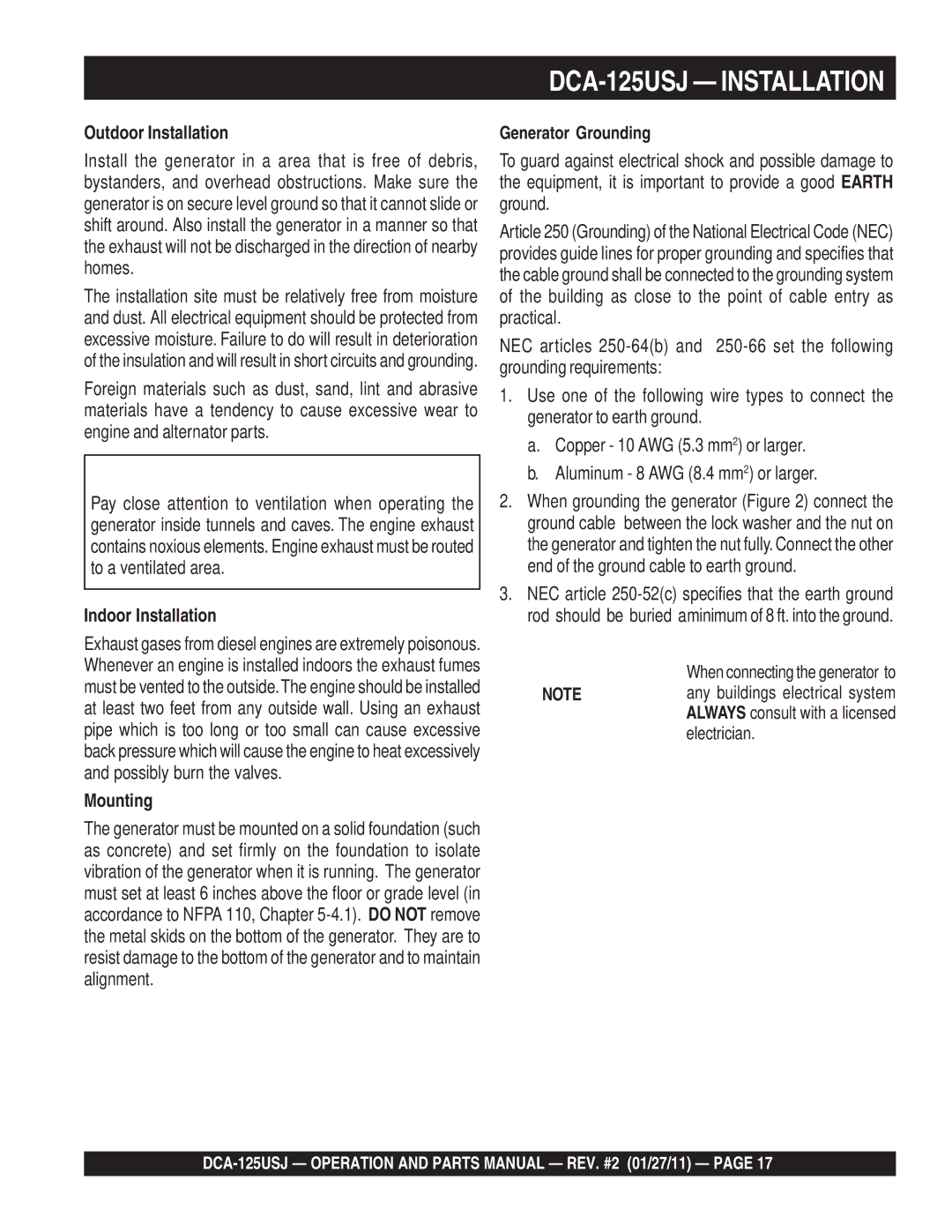DCA125USJ specifications
The Multiquip DCA125USJ is a robust, high-performance generator designed to meet the diverse needs of various industries, including construction, events, and emergency backup. This generator boasts a compact size and impressive output, making it a reliable choice for both temporary and permanent power solutions.At the heart of the DCA125USJ is a powerful diesel engine, providing an impressive 125 kVA output. This engine is engineered for efficiency, ensuring that the generator can continuously deliver reliable power while maintaining low operational costs. The generator operates at low RPM, which not only extends the engine's lifespan but also reduces noise levels, making it ideal for urban environments and sensitive locations.
One of the standout features of the DCA125USJ is its advanced electronic control system. This technology allows for seamless monitoring and management of the generator's performance, ensuring optimal operation. The control panel is user-friendly, offering real-time data on voltage, frequency, and operating hours, which simplifies maintenance and troubleshooting.
The DCA125USJ is equipped with a sturdy, weather-resistant enclosure that protects it from the elements, making it suitable for outdoor applications. This enclosure also contributes to noise reduction, ensuring quieter operation compared to traditional generators. Additionally, its compact design allows for easy transport and installation, making it a versatile option for various job sites.
Safety is a top priority in the design of the DCA125USJ. It features multiple safety mechanisms, such as an automatic shut-off system that activates in the event of low oil pressure or overheating, protecting the generator and prolonging its operational life.
Moreover, the DCA125USJ is compliant with rigorous emissions standards, making it an environmentally responsible choice. It offers options for multiple voltage outputs, which adds to its adaptability for different applications, from powering heavy machinery to providing electricity for small tools.
In summary, the Multiquip DCA125USJ stands out for its powerful diesel engine, state-of-the-art electronic controls, robust construction, and focus on safety and efficiency. Whether used in construction, outdoor events, or as a backup power source, the DCA125USJ is engineered to deliver reliable performance in a user-friendly package. This makes it a top contender for anyone needing dependable generator capabilities.

